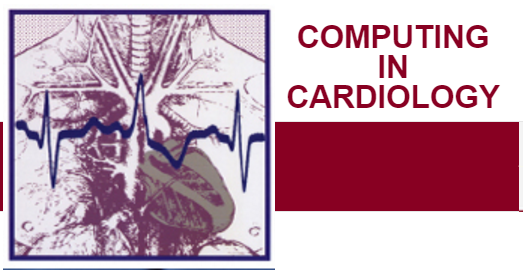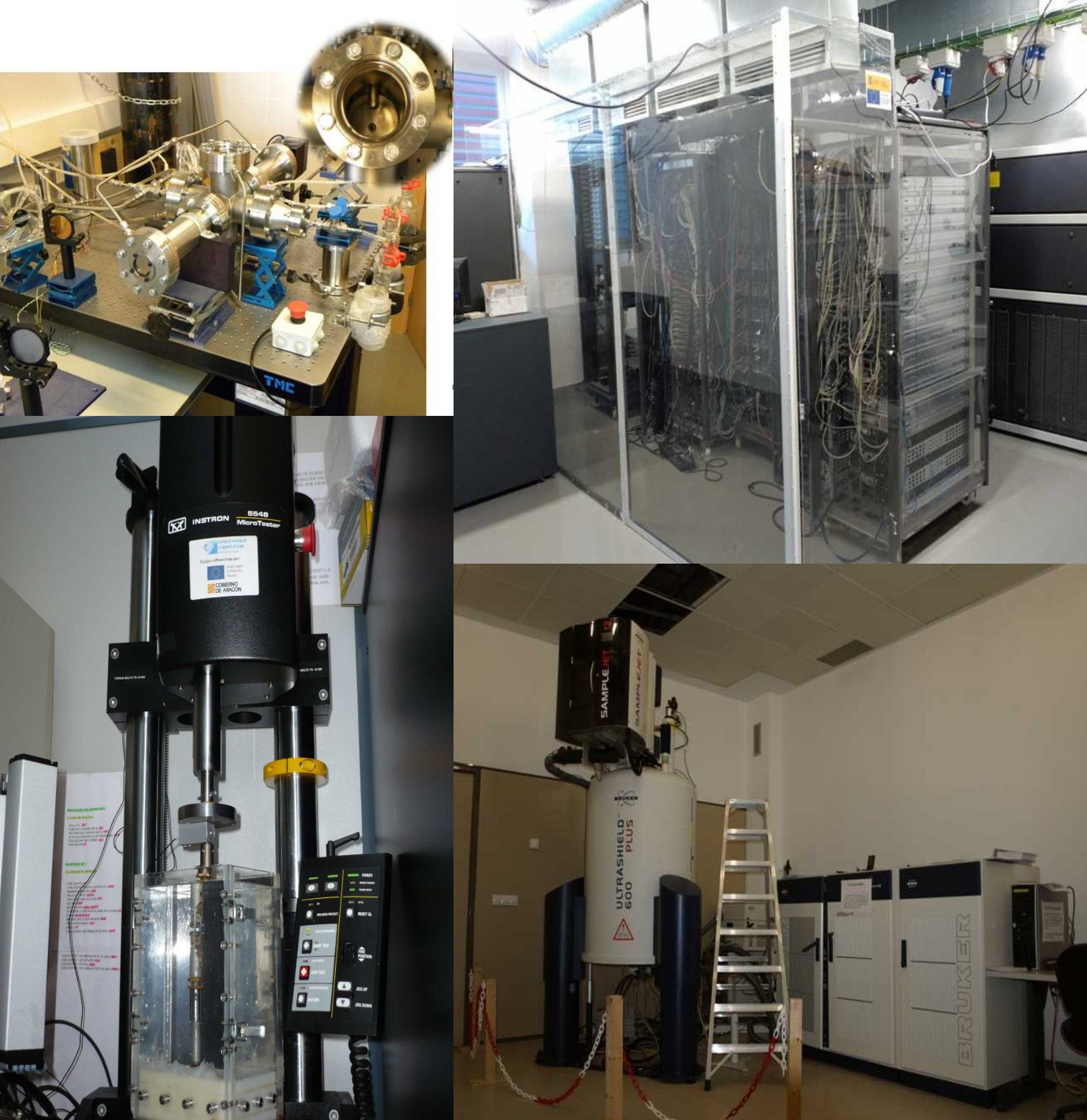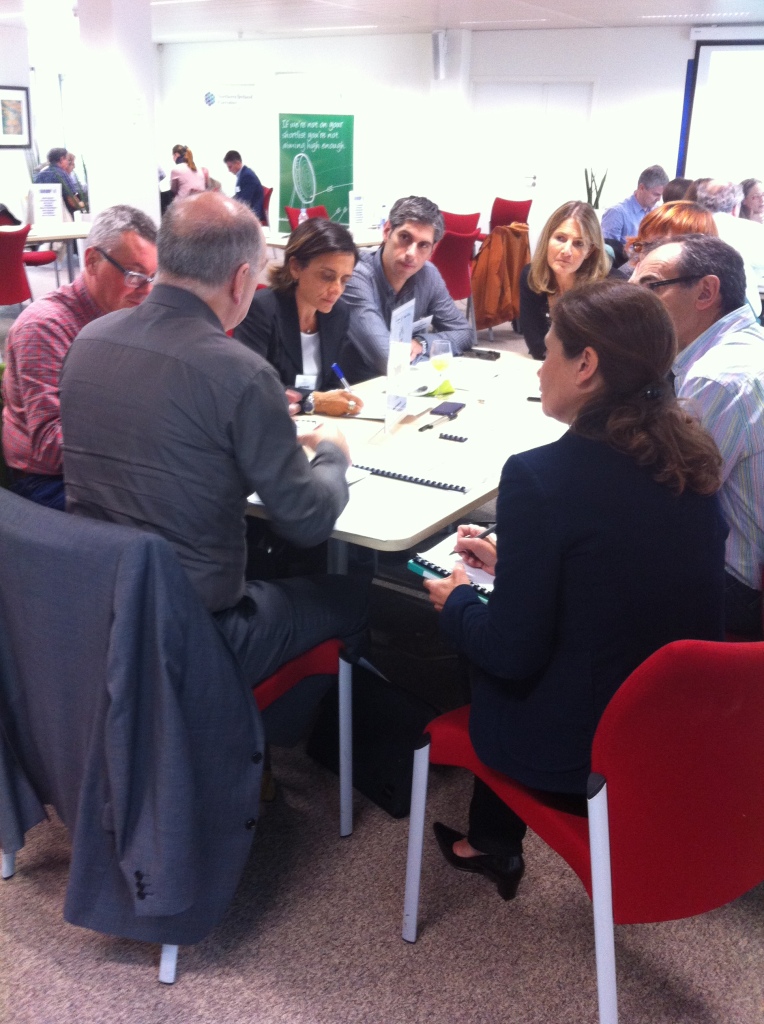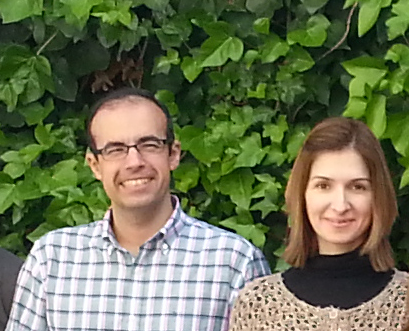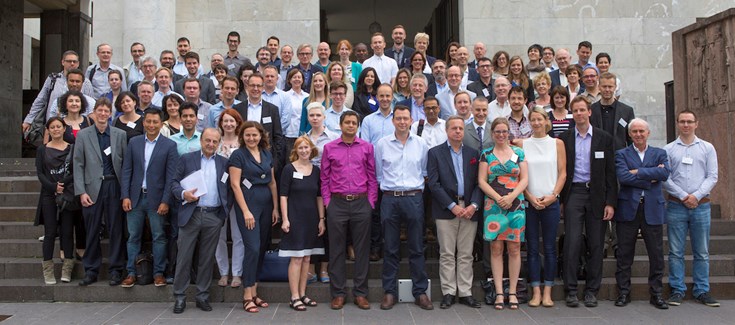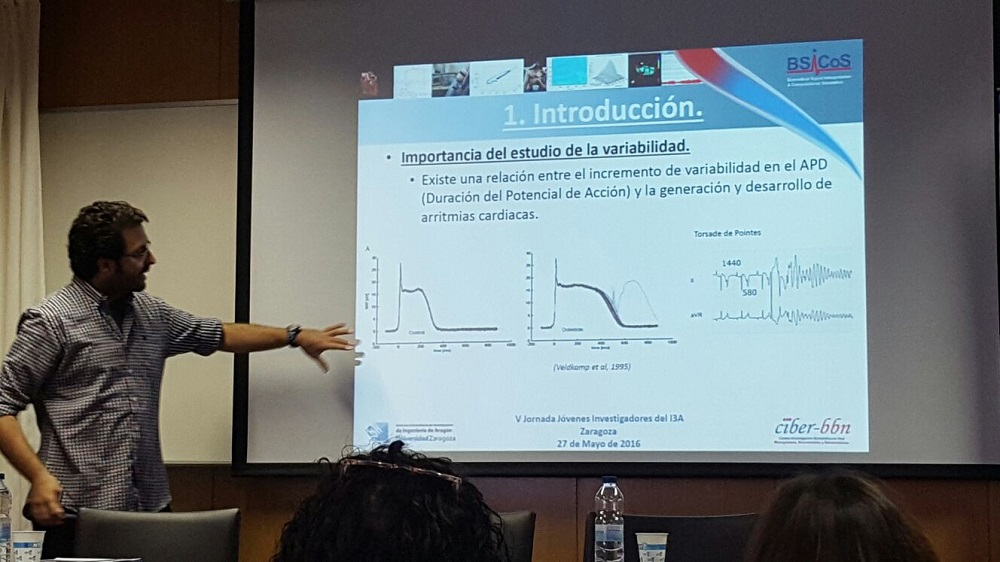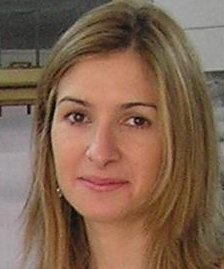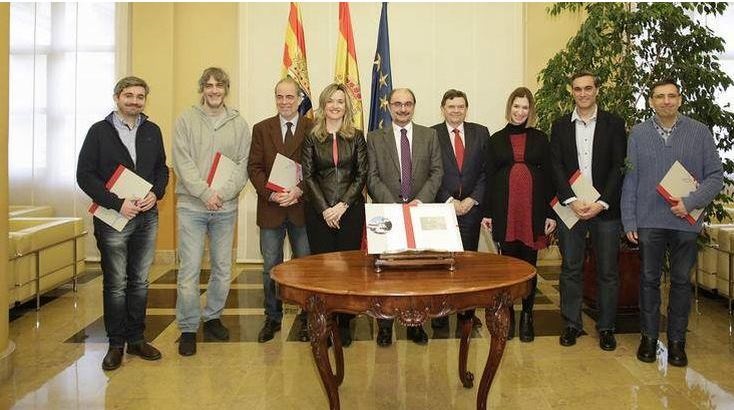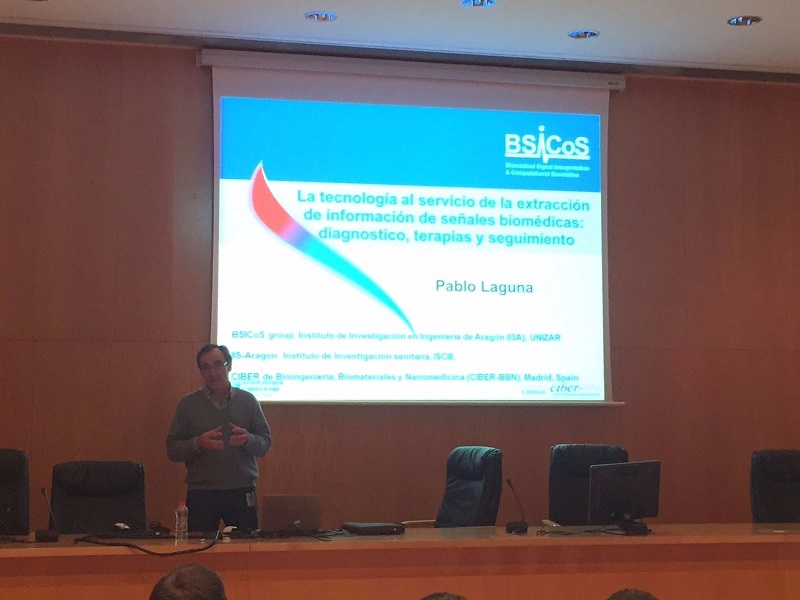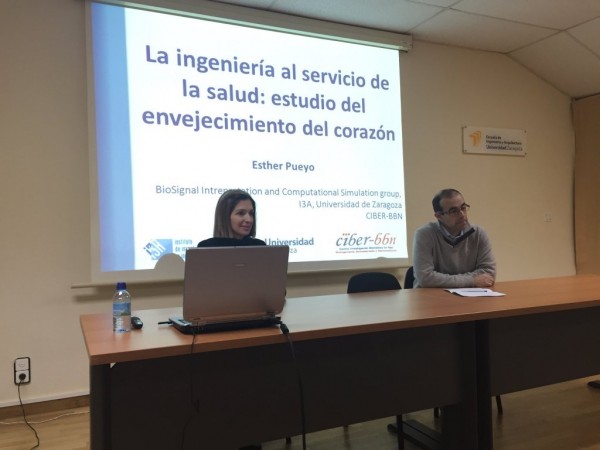Computing in Cardiology President’s Newsletter – 2017
Pablo Laguna, Scientific Director of Unit 27 of NANBIOSIS and President of CinC (2015-2018), presents the details of CinC 2017 in the Computing in Cardiology, which shall be held in Rennes, France, September 24-27
Dear CinC Attendee,
One more year has passed and the time to plan the annual conference has arrived. To help you with this, I would like to bring you an update on relevant aspects related to CinC-2017, including dates, deadlines and events. I would also like to update you on initiatives, some just consolidating recent developments, such as the Clinical Needs Translational Award (CTA), the Special Sessions Proposals, and the Mortara Travel Fellowships, together with other well established activities such as the CinC Challenge and the Young Investigator Award (YIA) (see below)
First, the Board of Directors and I wish to express our sincere gratitude to The Local Organising Committee and their team in Vancouver, headed by Dr. Andrew Blaber and Dr. Kouhyar Tavakolian. They put on a very successful conference in September 2016 with a record number of attendees in the American Continent. Our sincere thanks!
I would now like to bring your attention to the following information:
Conference Proceedings
The 2016 Proceedings are now available on line with direct access from the CinC web site http://www.cinc.org/archives/2016/. This year we have arranged to have our personalized doi (digital object identifier) for the proceedings. This identification will be of the form DOI:10.22489/CinC.2016.001-107, where the number 10.22489 is the prefix given to our organization, and the suffix CinC.2016.001-107 refers to our name (CinC), year (2016), and internal reference of each paper at the conference (eg 001-107). The doi will point directly to our CinC web Proceedings repository. The whole process has been finished later than in other years, due to the doi definition process itself, the required tool adaptation and the agenda fitting of the people involved in the elaboration, for which we apologize. Also, the papers will soon be available at the IEEE Xplore Digital Library. We are indebted to our Editor Alan Murray, and the CinC IT team, particularly Sheri Prucka, for all of the effort and hard work they have put into the production of the Proceedings.
CinC 2017: 24-27 September, Rennes, France
As you probably already know, the 2017 meeting will be held in Rennes, France. Rennes is the capital of Brittany, North West France, very well known for its university and cultural dynamism. The conference will be held at the École Supérieure d’Ingénieurs de Rennes (ESIR), campus de Beaulieu, Rennes, https://esir.univ-rennes1.fr. Further details can be found at http://www.cinc2017.org. In particular the Sunday symposium will be devoted to the fields of Cardiac Resynchronization Therapy (CRT) and vagus nerve stimulation.
Joint WG e-Cardiology ESC – CinC: Clinical Needs Translational Award (CTA)
This year, following its successful introduction last year, the CTA will be offered for a second time. Remember that its aim is the promotion and further stimulation of the translational component of CinC attendees’ research, a joint initiative between the Working Group on e-Cardiology of the European Society of Cardiology (ESC) and CinC. The paper which best addresses current clinical needs will receive the award, consisting of $500 dollars + €500 (funded by CinC and ESC WG e-Cardiology) which will be granted to the research team. To participate, a full 4-page paper must be submitted no later than April 15, 2017. A panel composed of researchers with a clinically oriented profile will assess the submitted papers. The announcement to the winning team will be made at the time of abstract acceptance. One member of the winning team will have to present the paper at the plenary session on the last day of the conference. There is no conflict between the YIA and CTA as the first author can participate in the YIA competition if he or she is eligible as a young researcher and, at the same time be part of a research team entering the CTA. The prize and a diploma to each member of the team will be given at the awards ceremony.
Special Sessions
The Special Sessions initiative will be organized this year for the second time. It is an effort to stimulate the dynamic nature of research, offering conference attendees a window for promoting an emerging research topic. You are therefore invited to propose a special session by submitting the following information:
- Names, email addresses, affiliations, and short biographies of the organisers who are expected to have a PhD or MD degree and a relevant publication track record in the proposed area.
- Title of the session.
- Aim and rationale for the special session.
- A list of proposed speakers, together forming an oral session with 4 presentations. It should be emphasised that abstracts submitted for a special session will be subject to review just like any other submission.
Proposals should be emailed to the secretary of the CinC Board, Leif Sörnmo, leif.sornmo@bme.lth.se, no later than March 1, 2017. All proposals received will be evaluated by the Board based on the timeliness of the topic, its uniqueness, and the ability to bring together key researchers. The Secretary will notify the proposers about the outcome no later than March 15th.
Rosanna Degani Young Investigator Award (YIA)
Since 1992, this award has been designed to encourage young investigators to present their work at CinC and have it discussed with experts. As an incentive every entrant in the YIA competition receives a 50% reduction in the CinC conference fee. The finalists can present their results in a plenary session and receive valuable cheques. You just need to have excellent results, be eligible for YIA, apply with a 4 page paper before April 15th, and attend CinC conference with a senior co-author.
Mortara FellowshipsIn
For last three CinC conference editions, fellowship support has been provided by Mortara Instrument Inc. When available, these Fellowships take the form of financial awards which allow young presenters to participate in the CinC meeting when travel costs might otherwise limit abstract submission and attendance. The Fellowships are intended to offset up to $2000 of the cost of attending CinC for successful applicants who a) should be 32 years old or younger, b) do not reside in the country of the current year’s conference, c) have previously presented their work at CinC, and d) submit acceptable papers on the topics of ECG or Patient Monitoring, which may include mathematical modelling. Full details can be found on the website, but please note that applications for these fellowships require a full 4-page paper to be submitted by the time of the conference abstract deadline. If awards become available this year, it will be an excellent opportunity for young investigators not to have the distance to Rennes as a barrier for attending CinC 2017.
CinC Challenge
Similar to previous years, there will be an exciting PhysioNet Challenge, organized in co-operation with PhysioNet. The topic of the the PhysioNet/Computing in Cardiology Challenge 2017 will be announced soon at the web page. Those wishing to participate will need to submit an abstract describing their work on the Challenge no later than April 15th, 2017, and must attend the conference to present it. Details on the challenge are expected to become public in early February, at http://www.cinc.org/ and, later in http://physionet.org/challenge/2017/.
CinC 2017 – Abstract Deadline
Please note that the abstract deadline is April 15th, 2017, and remember that all young investigators submitting a 4-page paper by the time of the abstract deadline, and attending the conference with their mentor/supervisor, will receive a 50% discount in registration, even if their paper is not submitted for YIA.
Facebook and Twitter
You can access and follow the CinC profiles via https://www.facebook.com/ComputingInCardiology and https://twitter.com/CinC_tweets where timely information is distributed about the conference.
Board Membership
An announcement was made at the closing of CinC 2016 that there would be four vacancies on the Board of CinC in September 2017. The Board invited expressions of interest from those who would be willing to work towards the aims of the organisation. The rest of the current members of the Board, who have not yet completed their 3 periods, each with a 3-year mandate, will most likely remain to provide experience and continuity. If you have attended a good number of previous meetings of CinC, feel you could bring some managerial experience to the Board, and you have not yet done so, please write to the past president, Peter Macfarlane, Peter.Macfarlane@glasgow.ac.uk, who will coordinate the process and provide you with a form to fill in your data and submit a short statement about your qualifications and skills. Please remember to provide that information no later than April 1st 2017.
See you in Rennes!
I sincerely hope that you are planning to submit an abstract for CinC 2017 so that we can continue to ensure that Computing in Cardiology remains the top conference for those interested in the field. The Board of Directors looks forward to seeing you in Rennes, France, in September 2017.
Pablo Laguna
President
